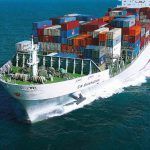How to Manage Business Risks in International Trade?

Creating an efficient international supply chain is one of the key factors for the success of global businesses. With the expansion of global trade and the diversity of markets, supply chains face new challenges such as legal complexities, cultural differences, logistical issues, and market fluctuations. To establish a successful and sustainable international supply chain, specific strategies tailored to these complexities are required.
1. Developing a Comprehensive and Multifaceted Strategy
The first step in creating an international supply chain is to develop a comprehensive strategy that considers all aspects, including sourcing, transportation methods, trade regulations, taxes and tariffs, and market demand. This strategy should also be flexible to respond to sudden changes such as economic fluctuations or shifts in trade policies.
2. Choosing Reliable and Committed Suppliers
Reliable suppliers play a crucial role in the success of the supply chain. Selecting suppliers who adhere to quality standards, timely commitments, and international norms is of great importance. Moreover, building strong relationships with suppliers and fostering trust between parties can enhance overall supply chain performance.
3. Effective Management of Logistics and Transportation
International logistics involves the effective management of transportation from origin to destination. Choosing suitable transportation methods, reducing costs and delivery times, and ensuring the security of goods are key aspects in this section. Leveraging new technologies such as tracking systems and smart inventory management can improve logistics performance.
4. Risk Management
In an international supply chain, various risks exist, such as changes in trade laws, sanctions, currency fluctuations, and logistical challenges. Establishing a risk management system that helps identify, assess, and mitigate these risks is essential. For instance, having alternative suppliers or contingency plans to address transportation delays can prevent negative impacts.
5. Utilizing Advanced Technologies
The use of advanced technologies such as the Internet of Things (IoT), blockchain, and artificial intelligence systems can enhance transparency, efficiency, and accuracy in the international supply chain. These technologies allow companies to track processes more precisely and respond quickly to changes.
6. Compliance with Legal and Cultural Issues
One of the biggest challenges of international supply chains is complying with local laws and regulations in each country. These may include tariffs, health regulations, and environmental standards. Additionally, paying attention to cultural differences and adapting to them can prevent potential issues from arising.
7. Leveraging Data Analysis and Demand Forecasting
Data analysis helps companies better understand customer behavior and market trends, using this information to forecast demand and manage inventories. By using advanced data analytics, supply chain performance can be enhanced, and better planning for the future can be achieved.
Conclusion
Creating an efficient international supply chain requires meticulous planning, strong collaboration with partners, the use of advanced technologies, and effective risk management. Given the global complexities and rapid changes in international markets, flexibility and innovation are essential for success in this field.
Article
The Strategic Role of Iran in Global Date Exports
- 23 March 2025
Smart Logistics Solutions in International Trade
- 9 September 2024
How to Manage Business Risks in International Trade?
- 9 September 2024
How to Create an Efficient International Supply Chain?
- 7 September 2024
Categories
Contacts
- Unit7, First floor, No 19, Salman Farsi st, Naderi, Ahvaz, Khuzestan, Iran
- +989 050505 682
- info@vahedtrade.com
Working Hours
9:00 AM - 5:00 PM
9:00 AM - 5:00 PM
9:00 AM - 5:00 PM
9:00 AM - 5:00 PM
9:00 AM - 5:00 PM
9:00 AM - 5:00 PM
Closed






